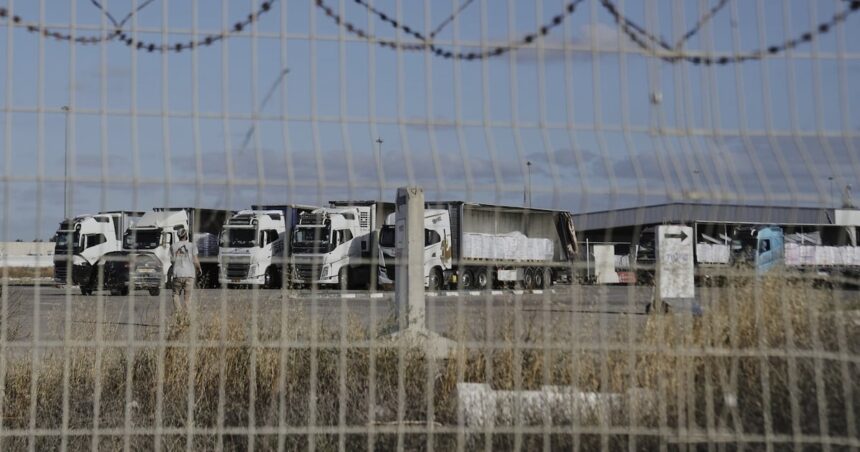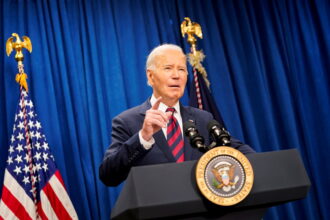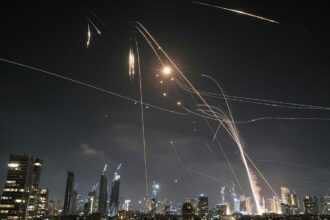In the pre-dawn darkness of northern Gaza, Israeli airstrikes pounded multiple residential areas Thursday, killing at least 85 Palestinians and deepening the humanitarian catastrophe that has defined this nine-month conflict. The latest wave of bombings came just hours after Israeli officials claimed they were increasing humanitarian aid into the besieged territory—a stark contradiction that encapsulates the harrowing reality facing Gaza’s 2.3 million residents.
“We were sleeping when suddenly everything collapsed on us,” said Mohammed Al-Ghoul, a 43-year-old resident of Beit Lahiya who lost three family members in the strikes. “No warning, no time to evacuate—just destruction.”
The Israeli military claimed the strikes targeted Hamas infrastructure embedded within civilian areas, a justification that has become familiar throughout the conflict that began after Hamas’ October 7 attack. That initial incursion killed approximately 1,200 Israelis and saw some 250 taken hostage. The subsequent Israeli campaign has now claimed over 38,000 Palestinian lives, according to the Gaza Health Ministry, which does not distinguish between civilians and militants but reports that women and children constitute two-thirds of the casualties.
Meanwhile, humanitarian organizations continue to sound alarms about catastrophic conditions. The World Food Programme reported this week that famine is “not just imminent but present” in northern Gaza, where Israeli forces have maintained tight restrictions on aid deliveries. This assessment directly challenges Israeli military spokesman Rear Admiral Daniel Hagari’s recent assertion that “the amount of humanitarian aid entering Gaza is increasing.”
According to United Nations monitors, aid trucks entering Gaza fell to just 60 per day in June—significantly below the pre-war average of 500 daily shipments and far short of what’s needed to sustain the population. This restriction comes despite the International Court of Justice’s order in January that Israel must take all measures to prevent genocide and improve humanitarian conditions.
“What we’re witnessing is a systematic strangulation of an entire population,” said Dr. Isabella Monteiro, an international humanitarian law specialist with the Crisis Response Institute. “The contradiction between increased aid claims and the reality on the ground represents a fundamental failure of international protection mechanisms.”
The crisis has particular resonance in Canada, where the conflict has sparked heated debates about foreign policy and humanitarian obligations. Last month, the Canadian government announced an additional $40 million in humanitarian assistance for Gaza, bringing total aid to $180 million since October. However, critics argue these financial commitments ring hollow without stronger diplomatic pressure on both parties to end hostilities.
Global mediation efforts continue to falter. U.S.-backed ceasefire negotiations stalled after Israel’s military operation in Rafah began in May, despite international warnings that it would worsen the humanitarian situation. Egypt and Qatar have attempted to restart talks, but fundamental disagreements about hostage releases and post-war governance structures remain intractable.
The conflict’s geopolitical implications extend far beyond the Middle East, influencing economic stability, regional security dynamics, and the integrity of international legal frameworks. Oil markets have shown increased volatility, and diplomatic tensions between Western powers and those supporting Palestinian sovereignty have intensified.
As night falls again over Gaza, residents prepare for more potential strikes while grappling with severe shortages of food, clean water, and medical supplies. The International Committee of the Red Cross reports that only 11 of Gaza’s 36 hospitals remain partially functional, creating impossible conditions for treating the wounded and chronically ill.
The fundamental question now facing the international community is not simply how to broker a ceasefire, but whether our global system of laws and norms has any meaningful capacity to protect civilian populations caught in conflicts when powerful states decide those rules no longer apply. Can diplomatic pressure ever outweigh military and strategic objectives, or are we witnessing the effective collapse of the post-WWII humanitarian framework?










